As I mentioned during our latest episode of the NYMG podcast, I’ve been playing Until Dawn, and the game has got me thinking about a few different things that I’d like to spend some time parsing through, like the game’s representation of things like gender and race, how it is that the idea of choice seems to influence the way we think about these representations, and the manner in which our engagement with representation and choice in Until Dawn is situated within the lineage of the horror genre as a whole.
(Spoilers, it may go without saying, to follow.)
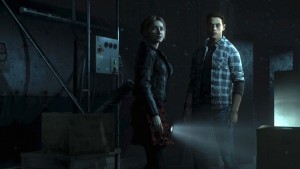 I don’t want to spend too much time summarizing the premise of the game, since Sarah’s power hour review (which I highly recommend anyone interested in the game read) does a great job of that. What I will say, though, is that Until Dawn, as a text that seems to occupy an almost hybridized space as an interactive slasher film in which the narrative relies heavily on a multitude of horror genre tropes, allows us to consider how it is that the introduction of choice as a narrative and gameplay device affects the way we might think about how such tropes can be manipulated, challenged, and even perpetuated.
I don’t want to spend too much time summarizing the premise of the game, since Sarah’s power hour review (which I highly recommend anyone interested in the game read) does a great job of that. What I will say, though, is that Until Dawn, as a text that seems to occupy an almost hybridized space as an interactive slasher film in which the narrative relies heavily on a multitude of horror genre tropes, allows us to consider how it is that the introduction of choice as a narrative and gameplay device affects the way we might think about how such tropes can be manipulated, challenged, and even perpetuated.
It seems to me that a lot of people talking about the game applaud it for being “genre-changing across the board… in terms of narrative and design innovation” or for allowing “you, the player, [to] finally make all those decisions you’ve been shouting at the screen for so long, every time an idiot does something wrong in a horror film and gets themselves killed as a result.” But do we really get to make all those decisions? Or is what we’re dealing with here, in part, the illusion of choice?
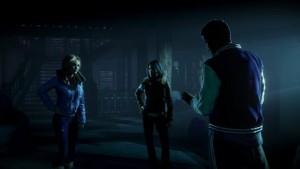 I ask this thinking about one particular interaction between the characters Jess and Emily, a scene in which these two women begin fighting over Mike, Emily’s ex- and Jess’s current boyfriend. In a scene just prior to this, a scene in which we play the character Matt (Emily’s current boyfriend), I was able to navigate a conversation about Matt and Mike’s current and former relationships with Emily so that their interaction ended up being resolved in a “let bygones be bygones” sort of way. The choices I was able to make while playing Matt allowed me to diffuse the situation and avoid confrontation. Not so in the altercation that occurs between Jess and Emily. There doesn’t really seem to be a way to make choices that would result in a more amicable interaction between these two women—because we don’t really get to make choices as either of them during this particular scene. In fact, we witness this confrontation while still playing through Matt, and the only choices we can make during their argument are to choose sides by telling one of the two women to, in essence, knock it off. Thus, instead of “let bygones be bygones,” here, we get “bitches be crazy.”
I ask this thinking about one particular interaction between the characters Jess and Emily, a scene in which these two women begin fighting over Mike, Emily’s ex- and Jess’s current boyfriend. In a scene just prior to this, a scene in which we play the character Matt (Emily’s current boyfriend), I was able to navigate a conversation about Matt and Mike’s current and former relationships with Emily so that their interaction ended up being resolved in a “let bygones be bygones” sort of way. The choices I was able to make while playing Matt allowed me to diffuse the situation and avoid confrontation. Not so in the altercation that occurs between Jess and Emily. There doesn’t really seem to be a way to make choices that would result in a more amicable interaction between these two women—because we don’t really get to make choices as either of them during this particular scene. In fact, we witness this confrontation while still playing through Matt, and the only choices we can make during their argument are to choose sides by telling one of the two women to, in essence, knock it off. Thus, instead of “let bygones be bygones,” here, we get “bitches be crazy.”
So what I’m wondering in this case (and many others) is, if Until Dawn is really all about letting us make “all those decisions [we’ve] been shouting at the screen for so long,” why can’t I make the decision to not have Jess and Emily engage in a stereotypical catfight? If the game is all about giving us the opportunity to play all these characters at different points throughout its narrative, why don’t I get to play through this altercation as one of the people engaged in it like I was able to do in the tête-à-tête between Matt and Mike?
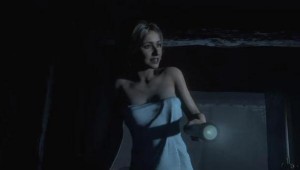 I think these are important questions to ask because such scenes reveal, as Sarah also points out in her review, that there are some fairly problematic representations of gender and race in the game. And interrogating these representations is important, especially since I’ve seen, in other discussions of the game, the justification of the use of such tropes as the manner in which the game “pays homage” to the horror genre. And that’s the kind of problematic line of rationalization that I think we’ve seen a lot lately (such as the justification for The Witcher 3’s lack of diversity by saying it’s based on Slavic lore). But why can’t a game pay homage to a genre without having women run around darkened hallways in a towel in order to highlight her vulnerability and without reappropriating Native American iconography in order to establish a “spooky” mood?
I think these are important questions to ask because such scenes reveal, as Sarah also points out in her review, that there are some fairly problematic representations of gender and race in the game. And interrogating these representations is important, especially since I’ve seen, in other discussions of the game, the justification of the use of such tropes as the manner in which the game “pays homage” to the horror genre. And that’s the kind of problematic line of rationalization that I think we’ve seen a lot lately (such as the justification for The Witcher 3’s lack of diversity by saying it’s based on Slavic lore). But why can’t a game pay homage to a genre without having women run around darkened hallways in a towel in order to highlight her vulnerability and without reappropriating Native American iconography in order to establish a “spooky” mood?
What worries me most is that Will Byles, Until Dawn’s creative director, seems to think that the game does work to transcend such stereotypes. Indeed, according to the Los Angeles Times, Byles argues that Until Dawn “doesn’t play into” the horror genre’s sexism:
That old-fashioned misogynistic attitude feels very dated now. This is a balance between four guys and four girls. It’s not like the girls all die and they all die horribly. We’ve avoided the traditional phallic stabbing. It just doesn’t feel contemporary.
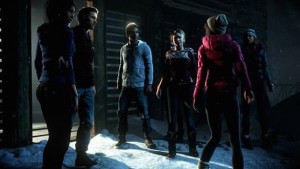 That logic scares me. The idea that diversity and representation can be addressed simply through a “balance between four guys and four girls” or through the removal of “traditional phallic stabbing” troubles me. These things feel formulaic, quantitative, mathematic—balancing equations and subtraction. Maybe I’m just not a math person. Or maybe I’m just the kind of person who think that representation and diversity need to be addressed not just through the numbers in the group or through the method of death-dealing but also through the manner in which the characters are developed or the manner in which the setting and tone of the narrative are rendered (among a host of other considerations).
That logic scares me. The idea that diversity and representation can be addressed simply through a “balance between four guys and four girls” or through the removal of “traditional phallic stabbing” troubles me. These things feel formulaic, quantitative, mathematic—balancing equations and subtraction. Maybe I’m just not a math person. Or maybe I’m just the kind of person who think that representation and diversity need to be addressed not just through the numbers in the group or through the method of death-dealing but also through the manner in which the characters are developed or the manner in which the setting and tone of the narrative are rendered (among a host of other considerations).
Problematic representations don’t disappear just because players can make a series of choices that saves everyone in the group. They don’t disappear just because everyone can, just maybe, survive until the dawn. Living and dying aren’t the benchmarks for such considerations. It’s the stuff that happens in between—it’s the narrative—that matters. And when that narrative stuff features spooky natives and catty women, then maybe those “old-fashioned” attitudes aren’t as dated as they should be.

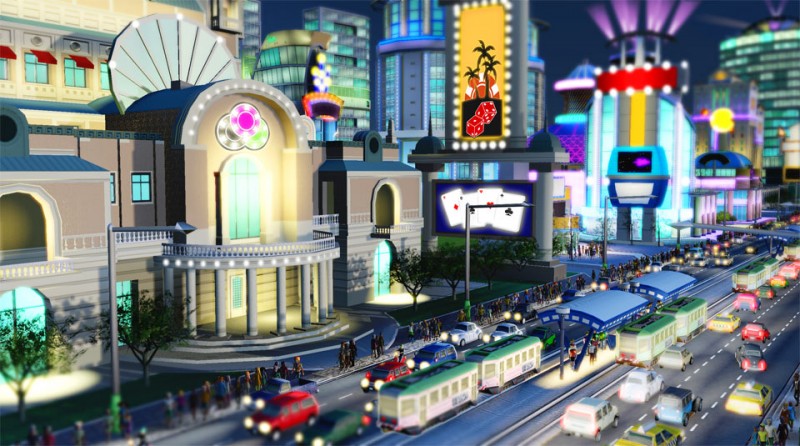
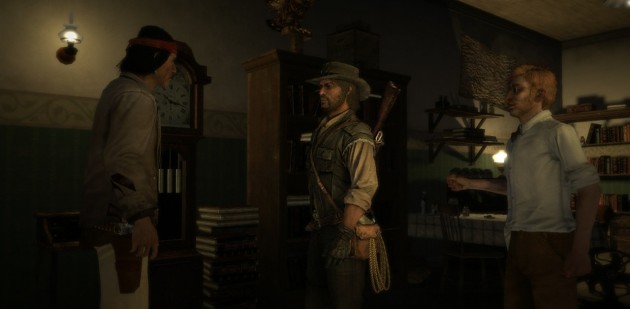
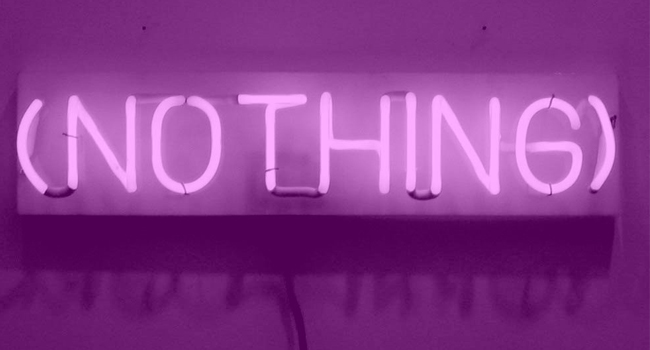
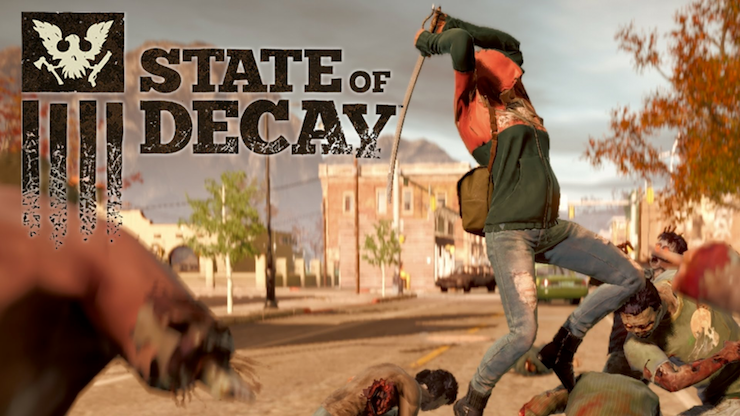
13 thoughts on “Until Dawn: On Representation, the Horror Genre, and the Illusion of Choice”
Thanks for this article! I’ve been waiting to read an essay like this since I finished the game last week. While I’d agree that until dawn isn’t as progressive as its creators might believe it to be, I also think that it hits one note of egalitarianism especially well. There’s a lot of hate for Emily out there, much of it earned, but by the end of the game, she made the strongest impact on me. The script makes no effort to soften her caustic personality as the story progresses, yet the game makes it fairly difficult to let her die, and ultimately, in my timeline at least, she ended up being the strongest, most capable characters of the game. Until dawn perversely refuses to punish her in the way horror movies generally do their unlikable prey. It reminded me of the TV show unreal, in a way, constantly challenging the audience into identifying with a deeply flawed, nigh I unpleasant characters. And so even if I wish that the script offered Emily more nuance, I appreciate how it uses her to challenge the audience’s assumptions, and allows her to become a hero, without softening any of her edges.
Great article! I couldn’t agree more. I’m a huge horror fan, and I don’t think there’s anything wrong with enjoying a simple, cliche entry the genre. But I can’t roll my eyes far enough when I hear people talk about Until Dawn being subversive or “genre changing”. As you write, it leans hard on standard horror tropes, and it’s treatment of gender is as old-fashioned as a slasher from the 80’s. I think articles like Cameron’s – where he basically admits the game is all tropes, but argues that it’s somehow actually deeper and more meaningful if you just have the proper appreciation of the horror genre – are bending over backwards to ascribe the game way more meaning and substance than it actually contains.
Thanks for your feedback! I, too, am a huge horror fan, and I really appreciate your emphasis on critically engaging with a text like Until Dawn. For me, such critical interrogation is another way I work to enjoy such a text. And, indeed, I think that, by being critical of the types of representations and tropes we see in the horror genre and in games like Until Dawn, we are more fully able to begin a conversation about what implications such representations have for us and to think about how the horror genre might move forward in more productive ways. Such conversations are really fun and generative for me, so thanks for reading and commenting!
I agree with most of what you said about the illusion of choice, but then you lost me at the whole “reappropriating Native American iconography” thing. I don’t think using Algonquin lore as a plot device is reappropriation. By those standards, you must have really REALLY disliked Never Alone…
You’re spot on about, the diversity for diversities sake, and about gender sterotypes thing though.
Hi, Derek–thanks for commenting. Perhaps it might be helpful for me to expand on what I mean in my discussion of the manner in which Until Dawn’s use of Native American iconography, as well as how this usage differs from the narrative and cultural context surrounding Never Alone.
It seems to me that Until Dawn uses things like the the totem structure and framework in order to rely on certain stereotypical representations of Native American culture to convey a specific tone; namely, it seems that the game, through these, as you say, “plot devices,” works off the assumption that Native American culture is mysterious, mystical, and, as a result, “spooky.” Indeed, the reliance on such tropes brings to mind the manner in which other horror narratives make use of Native American iconography in similar ways in order to convey similar tonal qualities, including, say, Poltergeist’s use of the ancient Indian burial ground as an explanation for the family’s being haunted by a preponderance of angry spirits.
Never Alone seems to operate in a different vein, though. First of all, I think it’s important to note that Upper One Games worked with the Cook Inlet Tribal Council to develop the game, and, as such, the narrative’s use of indigenous lore and culture seems to work off a different manner of intention, one that seeks to celebrate native culture and expand our understanding of indigenous folklore by allowing members of these indigenous groups to play a role in telling Nuna’s story. This feels much different to me than the manner in which Until Dawn incorporates Native American imagery into its narrative, a manner of incorporation that feels more peripheral than central, more superficial than expansive, more appropriate than celebratory. In other words, while Never Alone provides us with a narrative that expands our engagement with and understanding of indigenous culture and lore, Until Dawn provides us with the oft-used and one-dimensional stereotype of the mystical, spooky native not to expand our understanding of Native American culture but to perpetuate these stereotypes for the sole goal of creating a specific tone–for the sole goal of making us feel creeped out.
I’m not sure I agree with you here. Not once did I feel it relied on the totems to create a “spooky” tone but rather to lend to the Wendigo lore (Which as Derek pointed out stems from Native American lore). I do understand that movies do sometimes portray Native American culture as mysterious and spooky but I do not think Until Dawn can be placed in that category. I saw the totems as a nice homage to Native American culture, a reminder as to where the Wendigo myth came from.
Where is the line between “homage” (itself a touchy issue when applied to a culture, particularly for entertainment or convenience) and appropriation, however?
Well, that’s really up to the individual to decide. The way I saw it the game didn’t feel like it was relying on a stereotype but I’ll admit it also didn’t feel like it was attempting to teach about Native American culture. It felt more like a plot device that just worked with the lore as opposed to say finding shiny rocks or spider webs.
I found the whole Native American device to be offensive not because of me “appropriation” but because they were taking a culture that was, in many aspects, beautiful and primal and something modern society could learn from, and turned it into a cheesy creepy cheap horror device.
“If the game is all about giving us the opportunity to play all these characters at different points throughout its narrative, why don’t I get to play through this altercation as one of the people engaged in it like I was able to do in the tête-à-tête between Matt and Mike?”
actually if you have matt be aggro the girls don’t get into a cat fight, the boys have an awkward scuffle tho
That’s a good point, and I appreciate your clarifying this potential part/direction of the narrative. But I think there’s something interesting here, too, something that deserves teasing out a bit more.
So, what I’m struck by, here, is the fact that while we can potentially avoid the confrontation between Jess and Emily, we can only do so based on our actions when we play as Matt earlier on. As a result, it is up to our actions as Matt–a man–instead of our actions as either Jess and Emily–both women–to avoid a stereotypical cat fight. It seems to me that this other option that you expand on (and helpfully so), still, speaks to the fact that Matt is afforded agency in his altercation whereas these two women are afforded none. Why can we not play as Jess or Emily and allow them to make the decision not to fight for themselves? Why is even the avoidance of the women’s fight up to the actions of a man?
A very interesting article indeed. However I don’t think one scene that missteps invalidates the rest of Until Dawns narrative. I agree that the lack of phallic stabbing doesn’t in and of itself make the game subversive but I also think you’re selling the game short. While it’s true that the scene in question is problematic, several other scenes show typical horror trope characters more as actual people than lazy stereotypes. Emily especially is shown to be quite strong willed and resourceful despite the fact that she is first made out to be the ‘shallow asshole’ character. Jess and Mike has the chance to have a more introspective moment ata the cabin choosing to comfort one another on the couch instead of going straight to sex.
These points do not invalidate your arguments, but I don’t think your article invalidates the noble goals of the game either or the arguments from people who see the game as subversive.
The articles surrounding Until Dawn highlights a general problem with the academic approach to the horror genre: That academics/intellectuals either paint the entire genre in incredibly broad terms or see the more interesting horror films/games as purely ‘subversive’ to a genre that is otherwise looked down upon.
I’m not sure where it’s said in the original piece that one scene or another invalidates the entire narrative? I think, rather, she is using examples for her perspective, which is really all one can do — demonstrate and describe what was seen/experienced, and evaluate it.
As for your last remark here, I cannot agree. There’s too much out there examining individual horror games, motifs, characters, etc. to categorize all criticism of horror games or films in any kind of broad terms. In fact, horror films, at least, are often seen as more progressive from some angles than many other categories of films, and games critics working in the same genre often follow the same path.